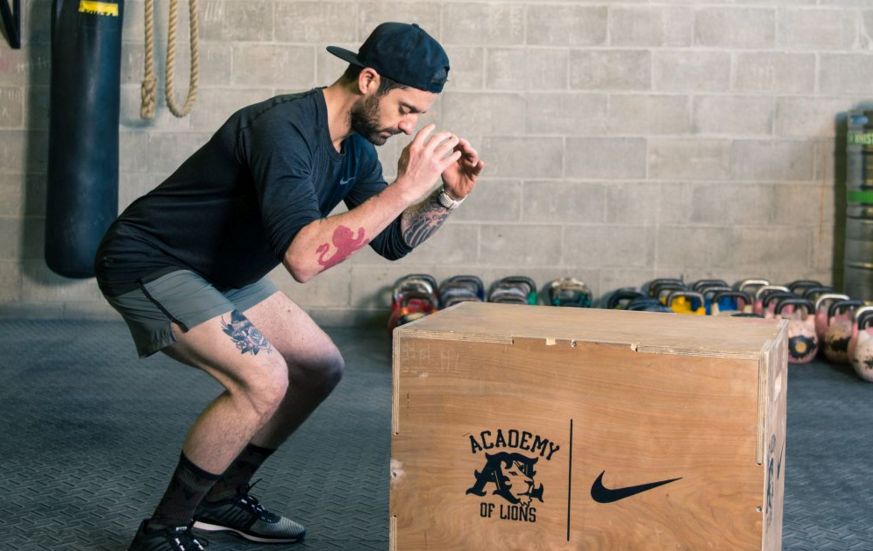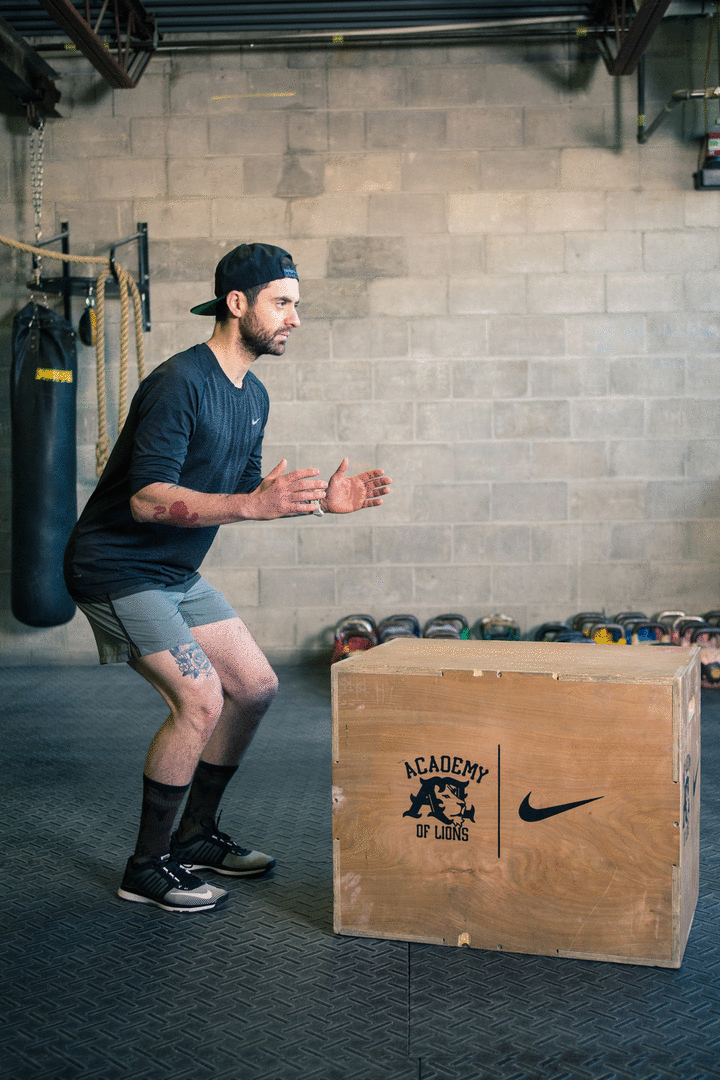Box jumps: Pop and float
Box jumps, or “plyo training,” is ideally incorporated into a cross-training day, which is present in most running programs.

What a box can teach us about running.

By Dhani Oks
A major component of a good running stride is generating power from the hips to propel you forward – getting air and then landing again with a quick rebound to do it again and again. Box jumps are an ideal training aid for any runner, helping to build proper form, core strength and conditioning.
Box Jumps, or “plyo training,” is ideally incorporated into a cross-training day, which is present in most running programs. Of course, proper form is key if you are to benefit from this simple but powerful exercise.
The Equipment
Most gyms have plyo boxes ranging in height from 10 cm to 100 cm. You don’t need to get too fancy – in most cases a stable bench, weight plates or even a set of stairs will serve the runner’s purpose.
It’s important that you start with a low box height. This is crucial in order to develop proper “rebounding” form, which eliminates stress on the knees, hips and back.
Our goal with this movement is to train our feet, Achilles tendon and calf muscles to act as one giant spring. If the box is too tall, you won’t develop this skill. Over time you can build height slowly, but in most cases 10-15 cm is enough.
The Technique

1. Keep your feet under your hips, just like you would when running. Having them too wide or narrow will rob you of power and potential.
2. Start the motion by engaging your abs and glutes – feel them “turn on.” Then squat back just a little as if you were about to sit on a really tall chair.
3. Powerfully jump up on the box. Ensure your feet land under your hips. Stand fully, extending your hips and making sure your abs and glutes are still “turned on.”
4. Jump down in a controlled way, your feet once again under your hips when landing.
5. Quickly rebound from the ground and jump up again. Gravity should be doing most of the work for you at this point. Your feet, Achilles, calf, glutes and abs are absorbing all that energy from the falling phase and redirecting the energy back upward. Think of a bouncing ball, effortless and perpetual.
What to Watch Out For
If you feel any pain in your knees, hips or back, take a break. Lower your box height and try again.
Your abs and glutes should be firing here, and your legs doing all the work powering the movement, absorbing those ground forces and rebounding you back up.
Filming yourself or having a qualified coach is also a great way to get feedback. If the movement looks ugly, it’s probably not safe or effective. If you need to rest in any part of the movement, do it while on top of the box. Again, rebounding is the key to this movement; you don’t want to waste gravity by stopping on the ground.
Don’t overdo it. The Achilles tendon is susceptible to overuse and can be easily injured if you are too tired and not present enough to focus on great form.
Get Started
Beginner
• 1–2 times a week
• Pick a low box (5–20 cm) or the first step on a set of stairs
• 10 seconds of box jumps, then 20 seconds rest for eight total rounds
Intermediate
• 1–2 times a week
• Box 10–30 cm
• Tabata: 20 seconds of box jumps, 10 seconds rest for eight total rounds
Advanced
• 2–3 times a week
• Box 20–50 cm
• 40 seconds of box jumps, 20 seconds rest for 10 total rounds.
Dhani Oks trains runners at Toronto’s Academy of Lions. Join his free run crew and their run lab: academyoflions.com/runcrewblog/runlab


